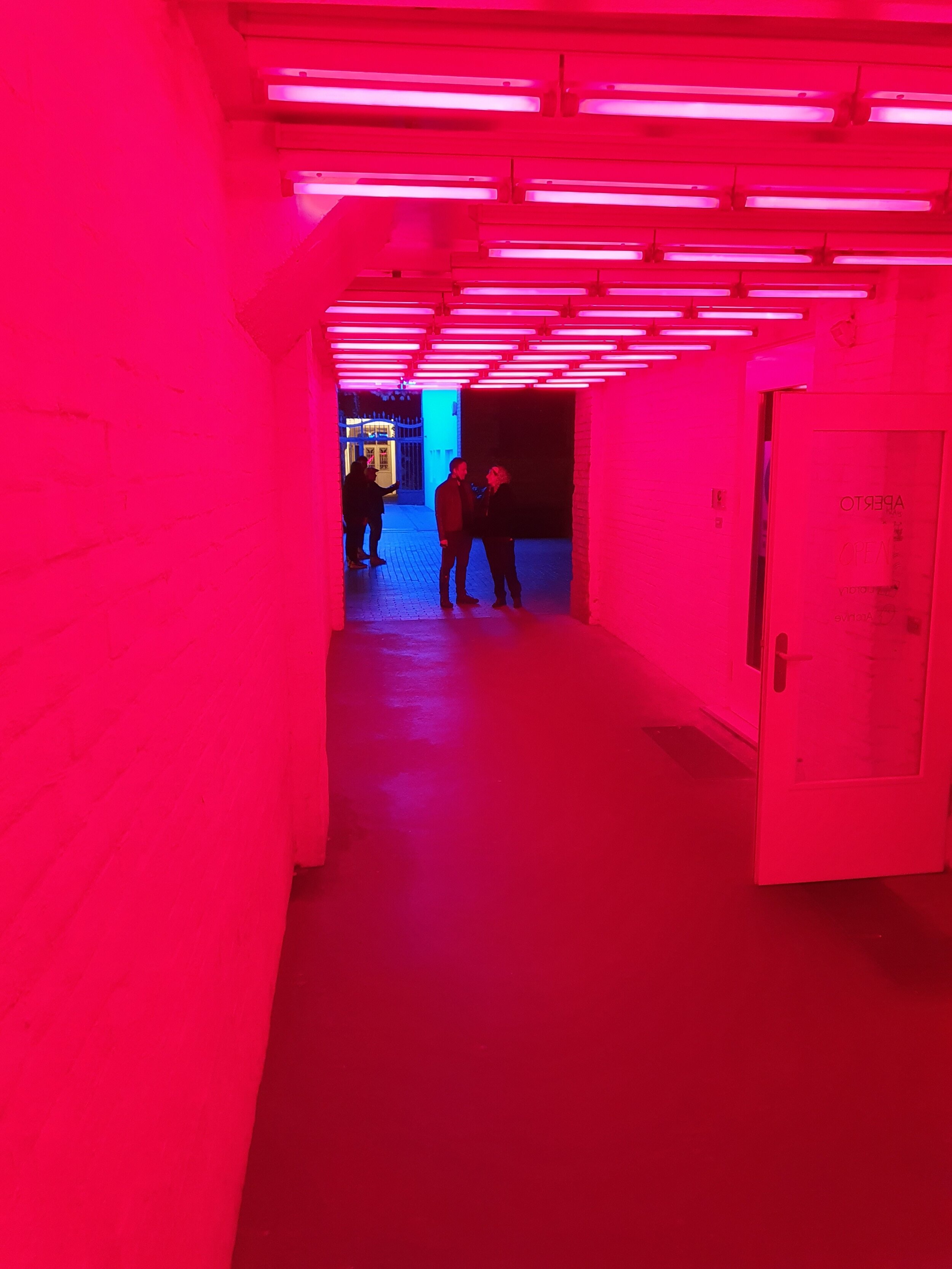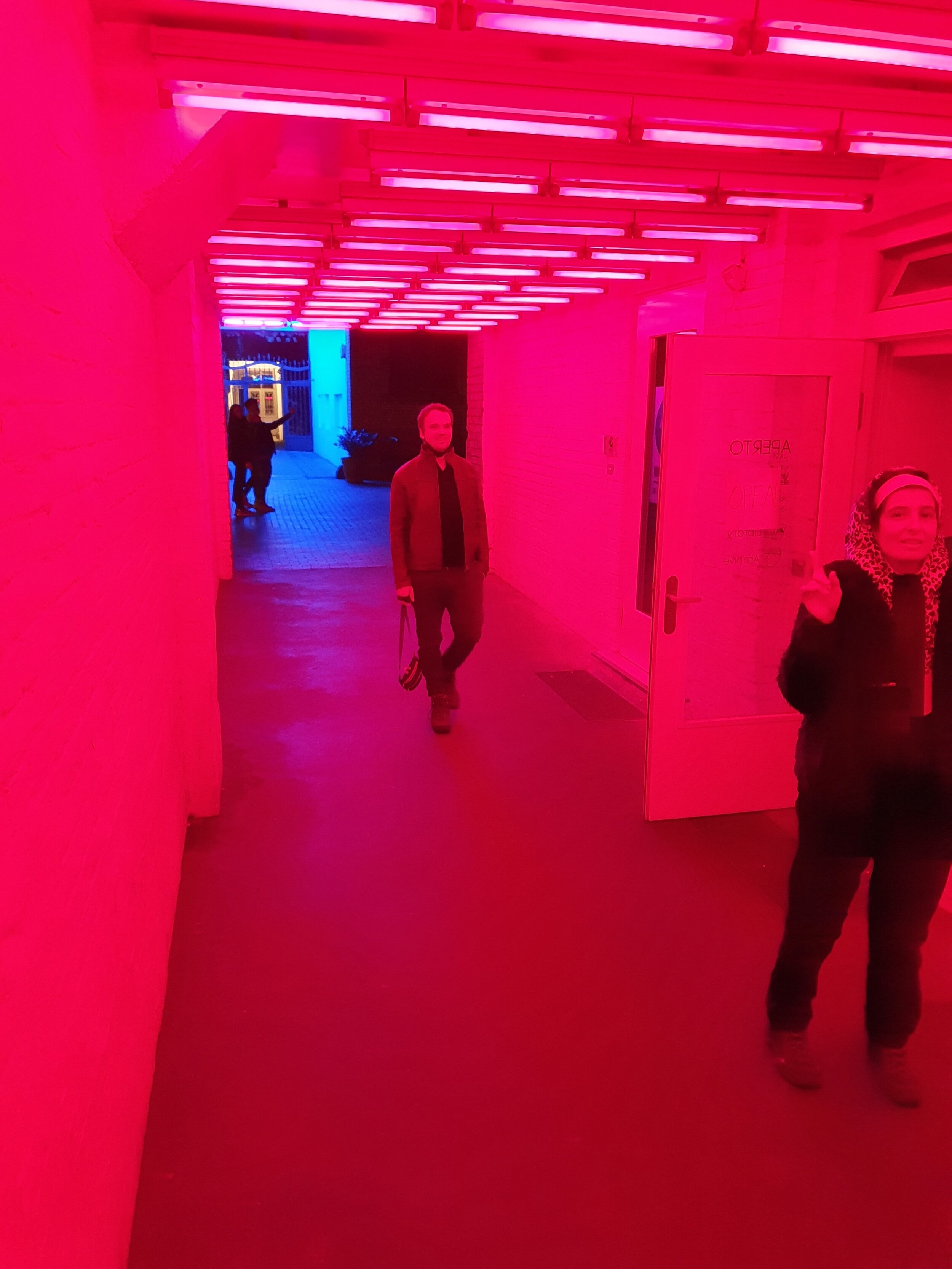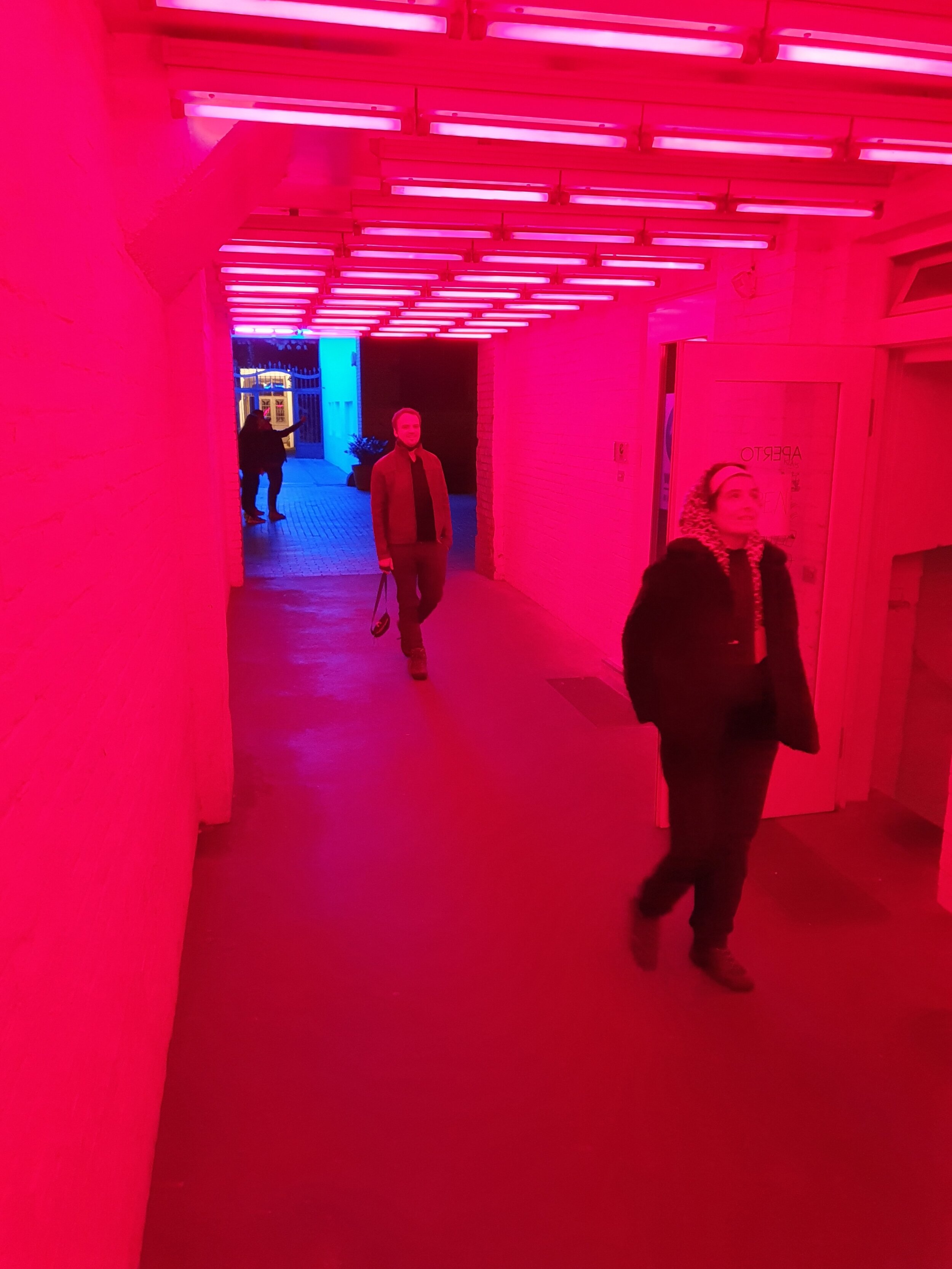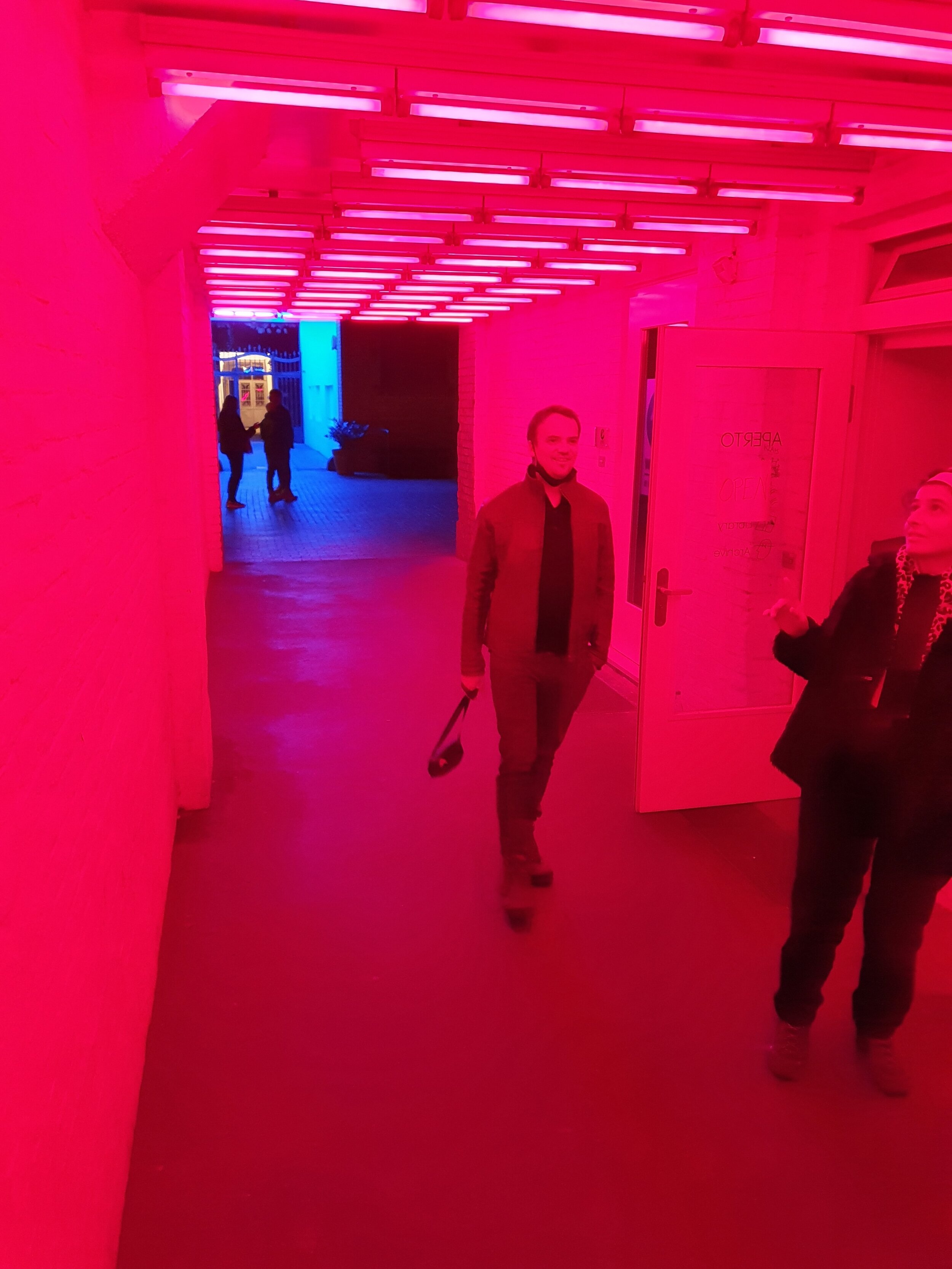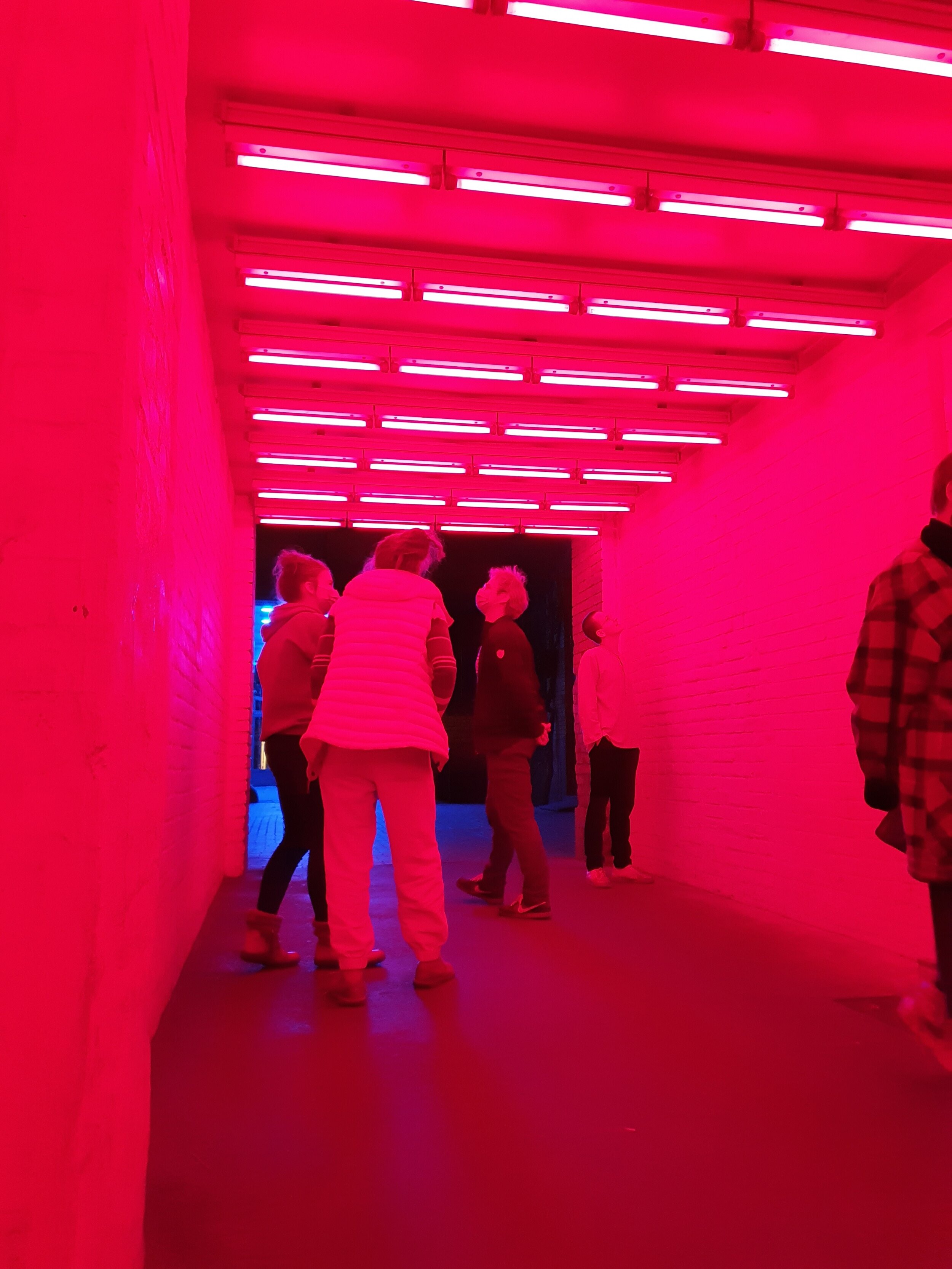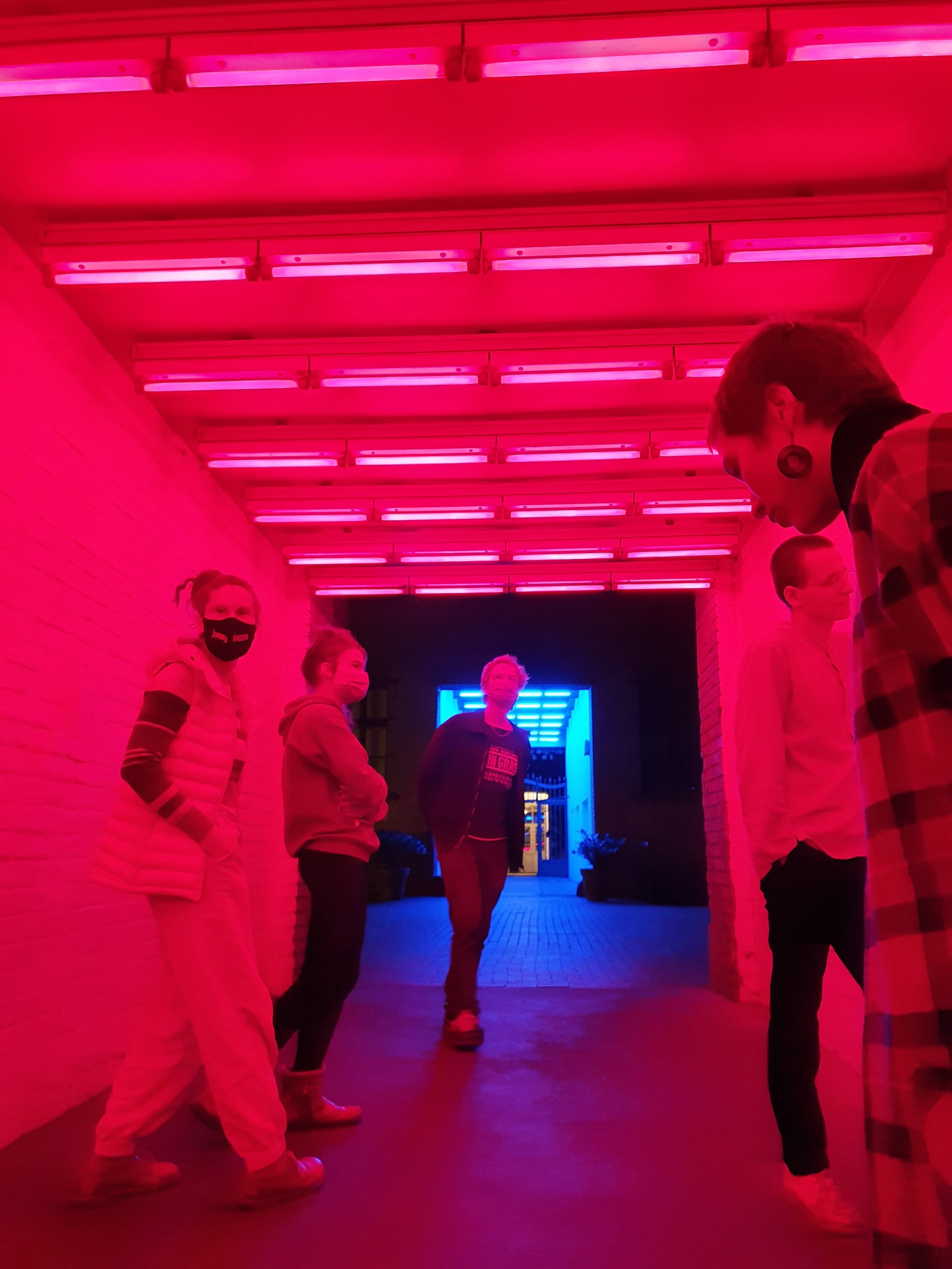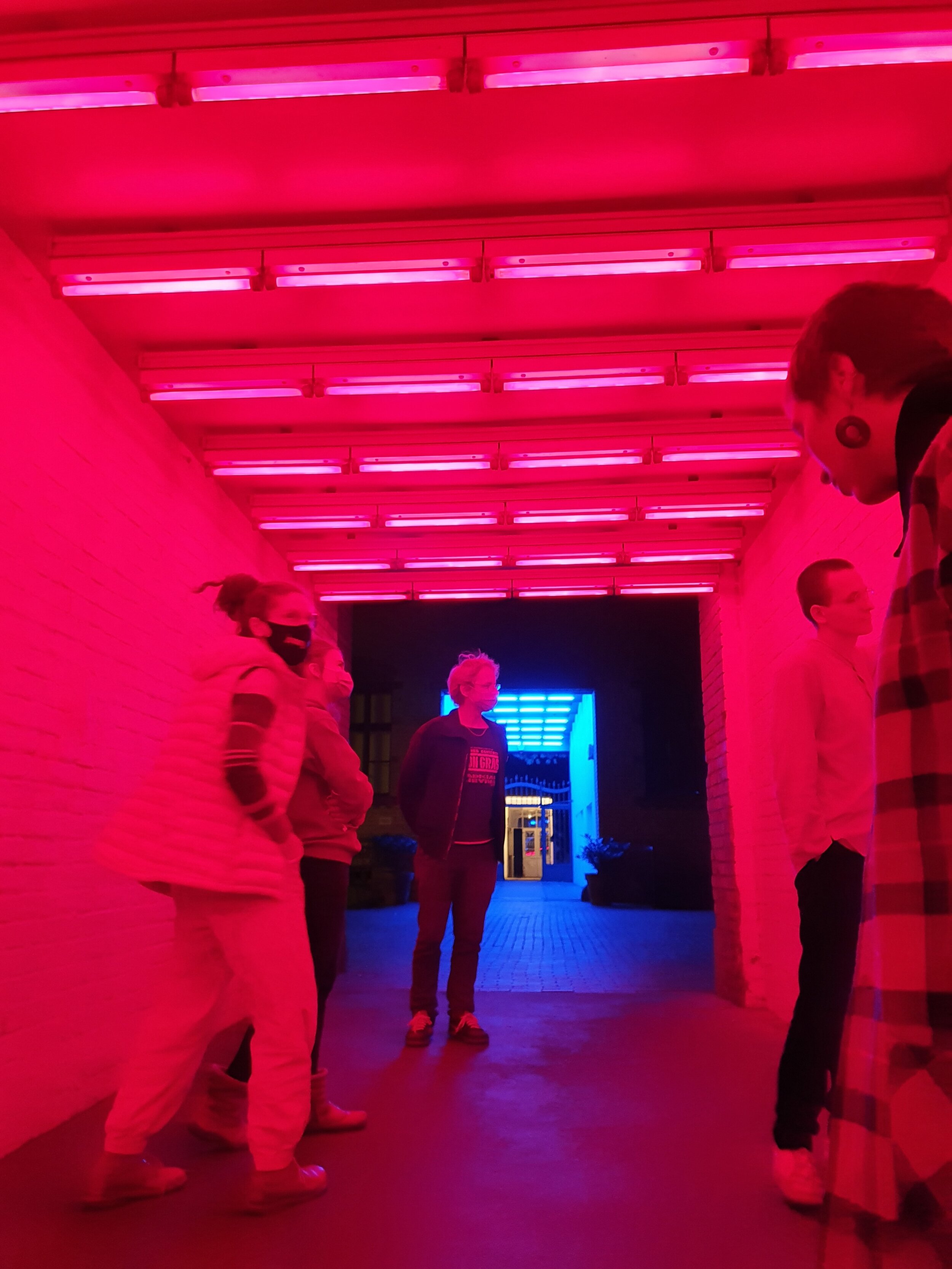"Walking Melody (Invitation to the Flaneur)" is a relativistically interactive sound installation, situated in the hallway in front of Aperto Raum, Berlin. 6 digital guitar tuners and 3 digital metronomes play their own separate tonal notes in the transitory space and allow each individual passing pedestrian to physically walk and compose their own perception, via their own active movement. Hidden in the architectural infrastructure of the hallway, the saw-tones emitted by the battery powered tuners blend into the space and create the illusion of being emitted by the light fixtures themselves. The scale presented spatially is as follows: #C-#G-#A-#F-#D-#C’. The three metronomes play at 60bpm, 120bpm and 240bpm, respectively.
Flâneur (/flæˈnjʊər/; French: [flɑˈnœʁ]) is a French noun referring to a person, literally meaning 'stroller', 'lounger', 'saunterer', or 'loafer', but with some nuanced additional meanings (including as a loanword into English). Flânerie is the act of strolling, with all of its accompanying associations. A near-synonym of the noun is boulevardier. Traditionally depicted as male, a flâneur is an ambivalent figure of urban affluence and modernity, representing the ability to wander detached from society with no other purpose than to be an acute observer of industrialized, contemporary life.
The flâneur was, first of all, a literary type from 19th-century France, essential to any picture of the streets of Paris. The word carried a set of rich associations: the man of leisure, the idler, the urban explorer, the connoisseur of the street. It was Walter Benjamin, drawing on the poetry of Charles Baudelaire, who made this figure the object of scholarly interest in the 20th century, as an emblematic archetype of urban, modern (even modernist) experience.[1] Following Benjamin, the flâneur has become an important symbol for scholars, artists, and writers. The classic French female counterpart is the passante, dating to the works of Marcel Proust, though a 21st-century academic coinage is flâneuse, and some English-language writers simply apply the masculine flâneur also to women. The term has acquired an additional architecture and urban planning sense, referring to passers-by who experience incidental or intentional psychological effects from the design of a structure.
(https://en.wikipedia.org/wiki/Fl%C3%A2neur)
